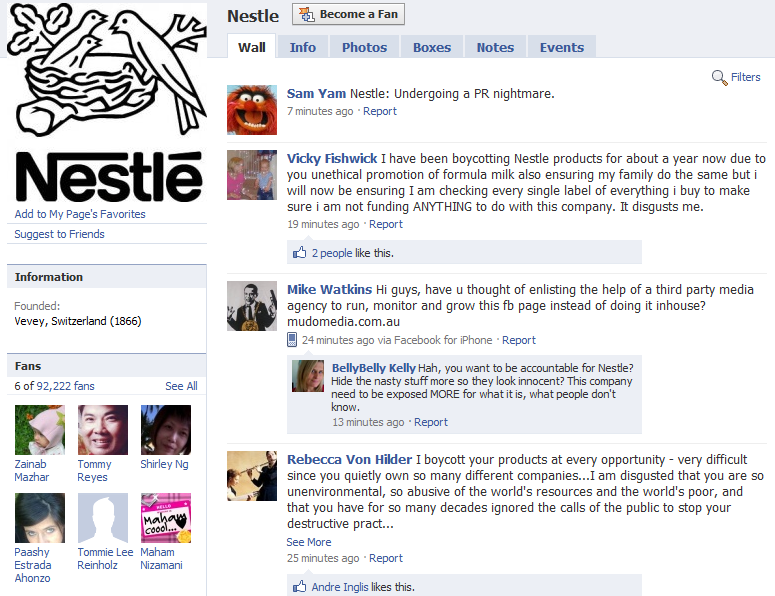A couple days back the food giant Nestle(after being targeted by Greenpeace) stepped on the wrong side of Social Media by posting rude and insensitive status updates and comments on their Facebook page. As expected, updates like this 
and comments like this

did not go down well with their existing fans and those who checked the page because of the brouhaha. Therefore, Nestle suddenly found itself in middle of another debacle courtesy inappropriate management of their Facebook page. The person handling their Facebook page obviously had no idea (nor does he/she have any now) of the blunder he/she committed.
Now that the mistakes have been made and realized, what next? I’ve read as much as ten posts by Indian and International bloggers/social media whatevers essentially either link blogging what others are saying or making the most obvious and superficial suggestions how the tone of the messages should not have been rude etc. Interestingly none of them offered a direction if not a solution of what can a brand do if it happens to run into a situation like this.
Possibly, it’s because none of those who wrote about the Nestle Crisis have ever managed a single Fan page by themselves.
Keeping that aside here’s a quick list of things that I would have done had I been in charge of the Fan page
( I have intentionally limited the scope of discussion to Facebook Fan Page and Off course I don’t expect everyone to agree with my method)
1) Admit you have made mistake(s):
One of the best ways to start your firefighting plan is by acknowledging your mistake and maybe promising that it won’t happen in future. A big brand admitting they did something wrong and apologizing gives everyone the signal that the brand is conscious of what it is doing and sets the expectation right. Also, most aggressive critics and fans turned critics an ego boost from this.
2) Remove offensive content:
Yes, remove the content that offended people. Irrespective of what others feel I am a strongly believer that you should remove offensive content to avoid it offending even more people. An offensive status message will keep getting more eyeballs with time and it’s best to take it out of the loop.
3) Change the Landing Tab:
This is what one gets if they go to the Nestle Facebook page
The deal here is that it shows you the same things irrespective of the fact whether you are a fan or not. This landing page could temporarily be changed to some other tab, say info.
Facebook Default Landing Tab settings.
4)Turn of “Auto expand” comments:
Slightly below the default landing tab drop down is another option that let’s you configure if the comments
on a status will be expanded by default(with top few comments listed) or will they just show up as *x comments*, only on clicking which one can see the comments. The idea here is to reduce the visibility of negative content so as to reduce others doing the same thing.
These are just a few things that can possibly be done to control the situation from flaring further and in case things go really out of hand temporarily stop fans from posting comments to your page all-together.
All the points mentioned above are just for firefighting a Nestle like crisis on Facebook and are obviously not the perfect solution. Some people for example might have issues with removing the offensive content or making it less/easily visible but then a temporary fix needs to be done to avoid things from spilling over. Also, once the basic firefighting is taken care of the brand must get back to doing the right things and work its way out of the Crisis.


